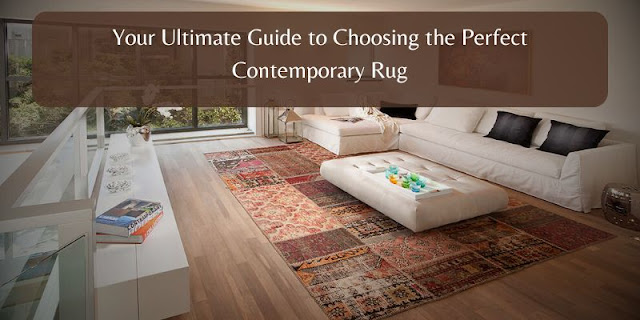The Art and Heritage of Oushak Rugs: A Complete Guide
For centuries, intricately woven textiles like Oushak rugs have been admired for their elaborate designs, luxurious texture, and deep cultural significance. Originating from artisan communities in Western regions, these pieces have played a crucial role in the world of textile artistry, gracing palaces, museums, and homes with their timeless beauty. Whether you are a collector, interior designer, or simply someone who appreciates fine craftsmanship, understanding the history, characteristics, and impact of these masterpieces can enhance your appreciation for the art of weaving.
A Rich Historical Legacy
Western regions have been significant centers for textile production since the 15th century. Under influential empires, these handcrafted pieces became sought-after commodities, often used in royal palaces and commissioned by European nobility. Unlike other varieties woven in urban workshops, these artistic creations were crafted in village settings, giving them a distinct charm and authenticity.
The golden age of these textiles was during the 16th and 17th centuries when they were extensively traded across Europe. Many of these artistic works appeared in European paintings, further solidifying their status as prized possessions. Over time, the weaving traditions evolved, incorporating new influences while maintaining the essence of their historical craftsmanship. Turkish rugs gained prominence during this period, becoming highly valued for their intricate patterns and durability.
Signature Design Elements
One of the defining features of these textiles is their large-scale floral motifs. Unlike the densely packed patterns found in other woven designs, these compositions emphasize spaciousness and elegance. Common design elements include:
- Medallion and Star Patterns: Traditional pieces often feature large central medallions or geometric star motifs.
- Soft Color Palette: These designs typically use warm, muted tones such as ivory, gold, terracotta, and light blues, which contribute to their timeless appeal.
- Silky, Shimmering Texture: Made primarily from high-quality wool, sometimes blended with silk, these textiles are known for their luminous pile and soft feel.
- Hand-Spun Wool and Natural Dyes: The use of hand-spun wool and natural dyes gives each piece a unique character and enhances its durability. Turkish Oushak rugs are particularly known for their exquisite craftsmanship and distinct color schemes.
Weaving Techniques and Craftsmanship
Authentic handcrafted textiles are created using symmetrical knotting techniques that contribute to their strength and longevity. The weaving process is meticulous, often taking months to complete depending on the size and complexity of the design.
Each piece is crafted by skilled artisans who have inherited techniques passed down through generations. The natural dyeing process, which involves plant-based and mineral-derived dyes, ensures that the colors age gracefully, often becoming even more beautiful over time.
Textiles in Interior Design
The versatility of these textiles makes them a favorite among interior designers. Their soft hues and sophisticated patterns complement a variety of décor styles, from classic and traditional to contemporary and minimalist settings. Whether used as a statement piece in a living room, a warm accent in a bedroom, or a welcoming addition to an entryway, a well-crafted textile can elevate any space.
Pairing these pieces with antique furniture enhances their historic charm, while placing them in a modern setting creates a striking contrast that highlights their artistic beauty. Because of their relatively low pile and soft texture, these textiles are also ideal for layering with other materials such as jute or sisal for added depth and dimension.
Collecting and Caring for Handcrafted Textiles
For collectors and enthusiasts, investing in these artistic pieces is both an aesthetic and financial decision. Authentic antique textiles are rare and valuable, with some commanding high prices at auctions and specialty dealers. When purchasing a handcrafted piece, consider the following:
- Authenticity: Look for hand-knotted construction, high-quality wool, and natural dyes.
- Condition: Antique pieces may have some wear, but excessive damage can affect their value.
- Provenance: Knowing the textile’s history can enhance its worth and appeal.
To ensure longevity, proper care is essential. Regular vacuuming, professional cleaning, and rotating the piece to prevent uneven wear can help maintain its beauty. Avoid direct sunlight exposure to prevent fading, and use padding to provide additional support and prevent slipping.
Investment and Cultural Impact
These handcrafted pieces are not just decorative items; they are also valuable investments. Their durability and timeless design make them highly sought-after by collectors and interior designers alike. Many antique textiles appreciate in value over time, making them a smart investment for those who recognize their artistic and cultural significance.
Beyond their monetary worth, these textiles hold deep cultural meaning. They represent the artistic ingenuity of master weavers and the historical evolution of textile art. Each piece tells a story, woven with dedication and skill, making it a cherished heirloom passed down through generations.
Conclusion
Oushak rugs are more than just decorative floor coverings; they are a testament to centuries-old artistry, cultural heritage, and masterful craftsmanship. Their unique blend of history, design, and functionality makes them a cherished addition to any home or collection. Whether you are drawn to their rich history or their elegant aesthetic, these timeless creations bring warmth and sophistication to any space.




Comments